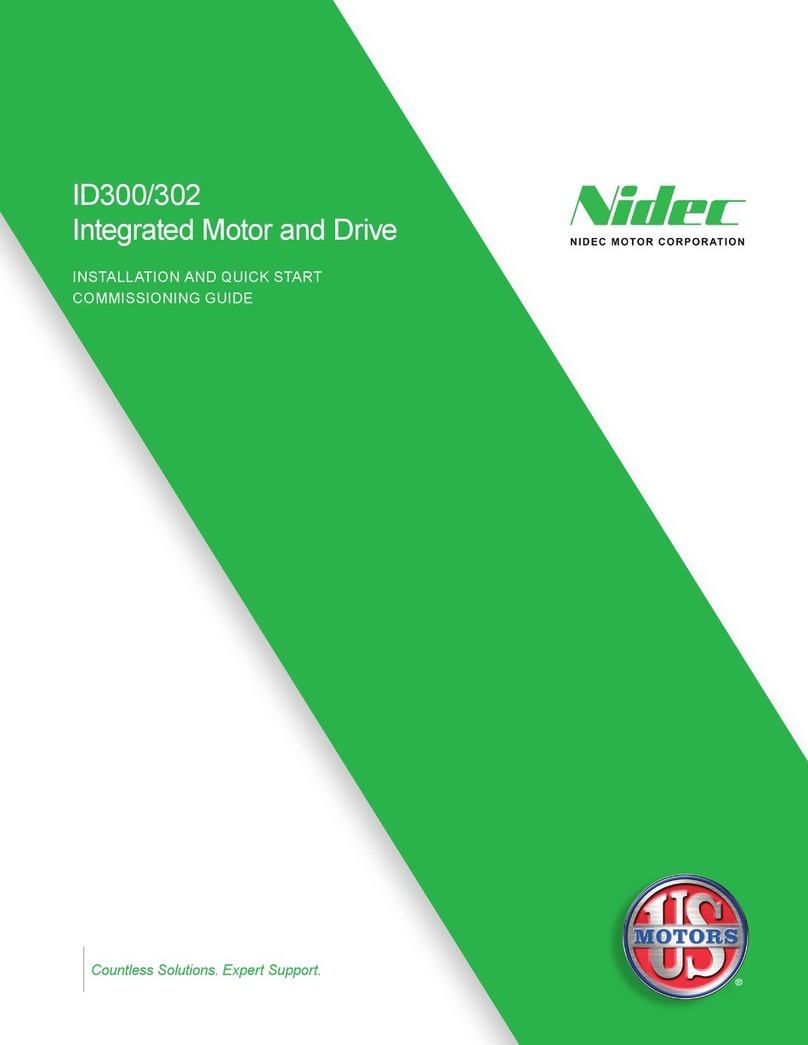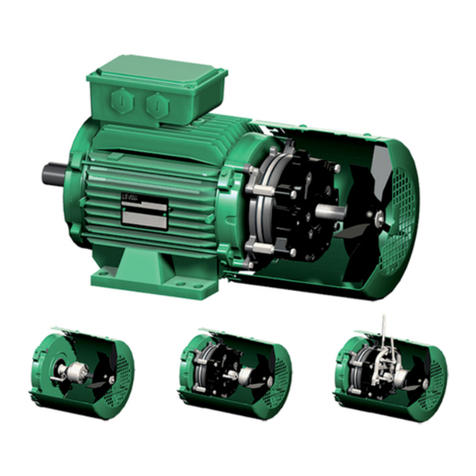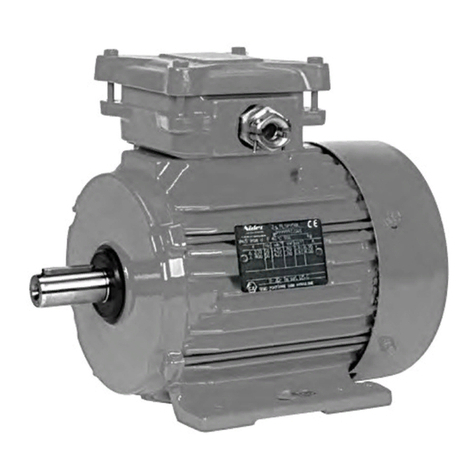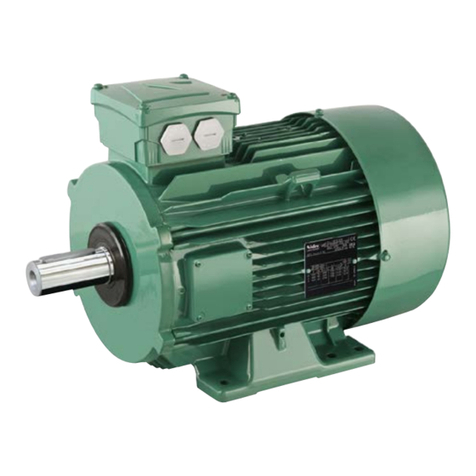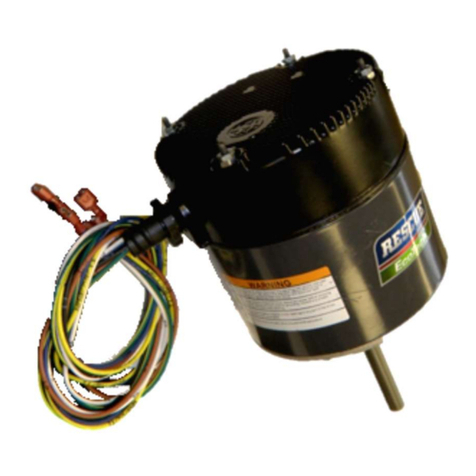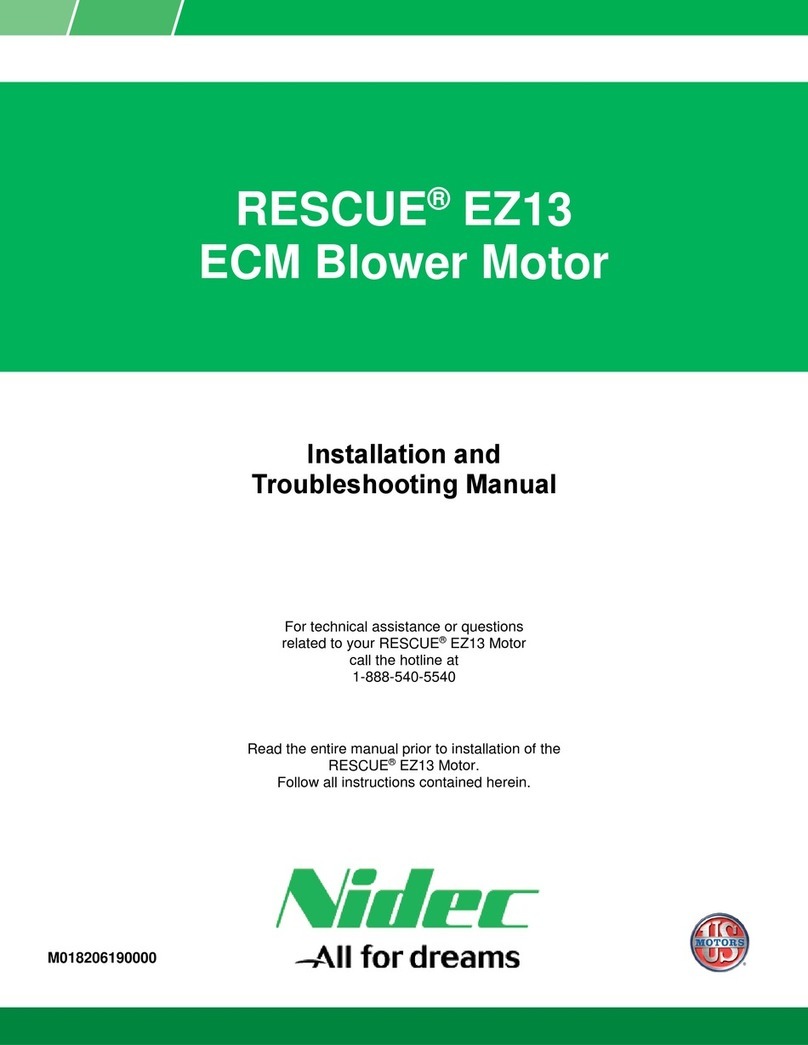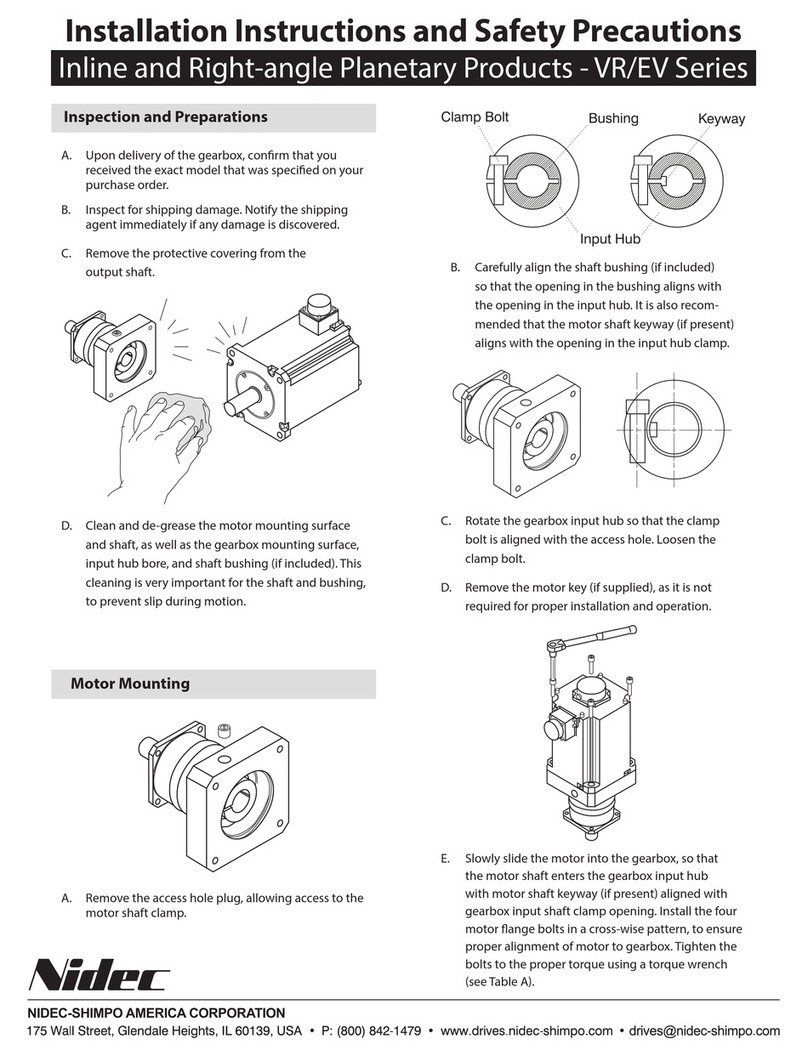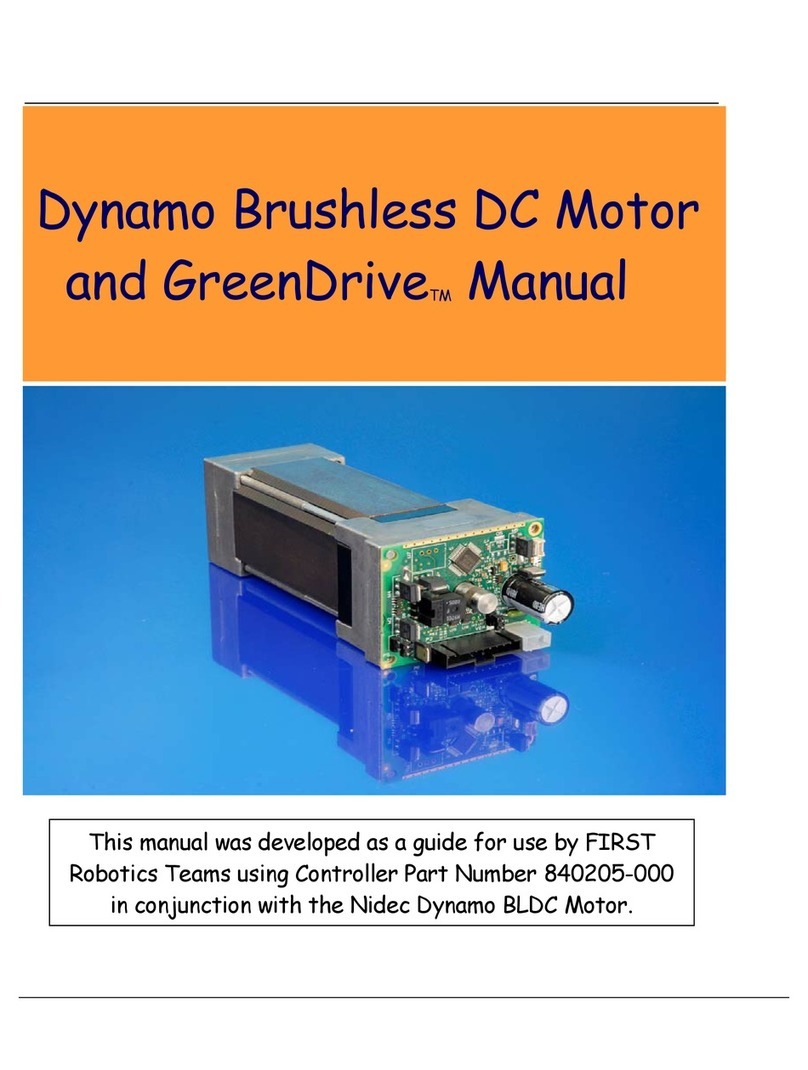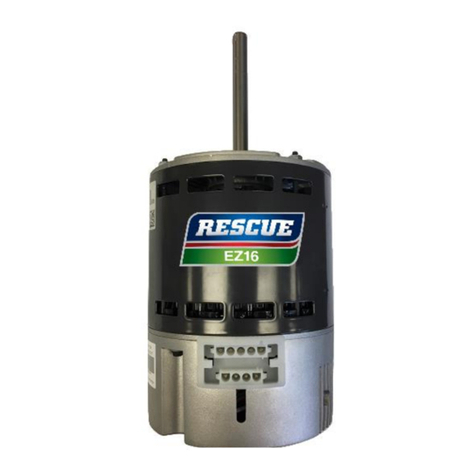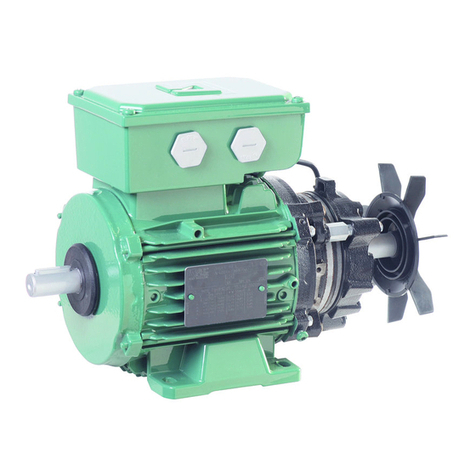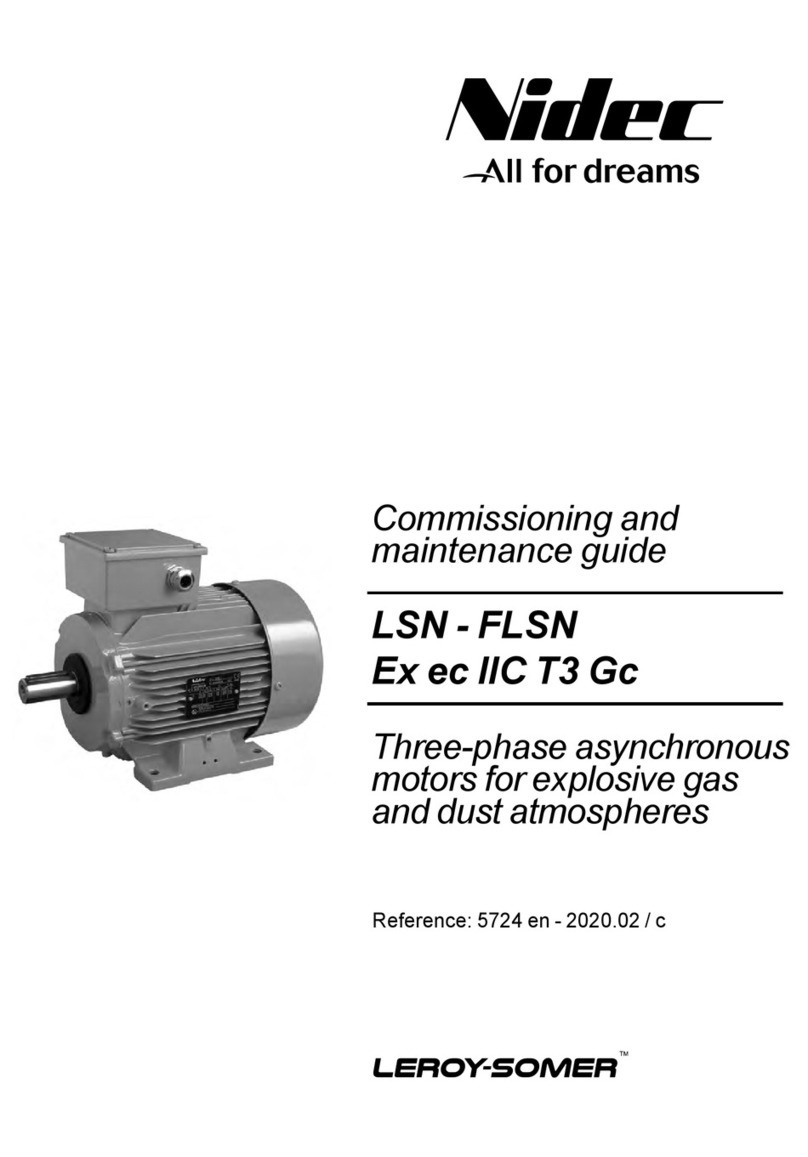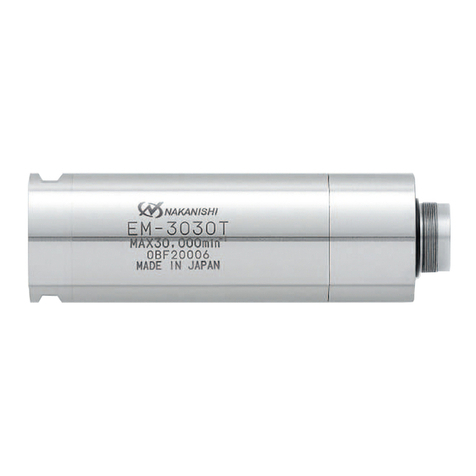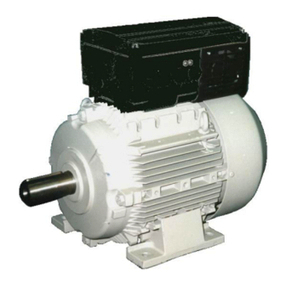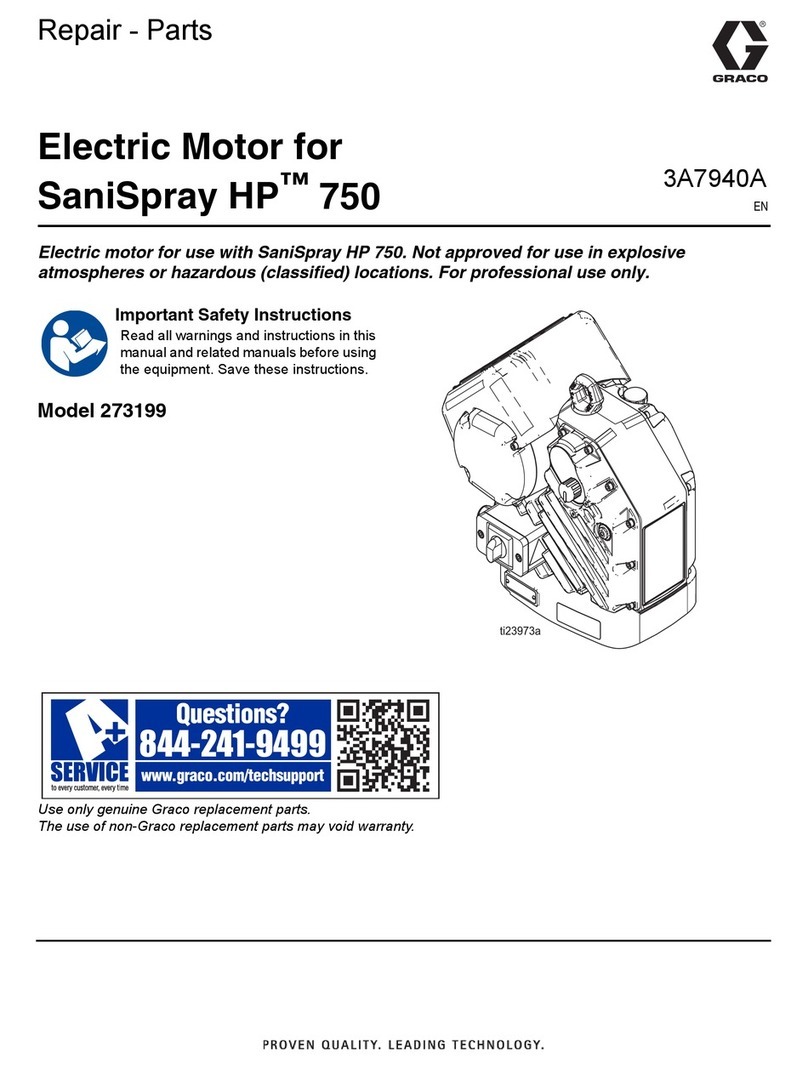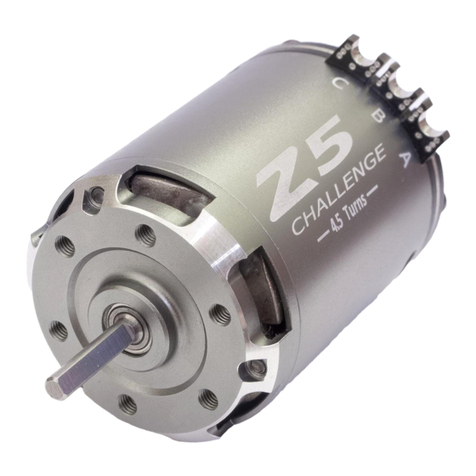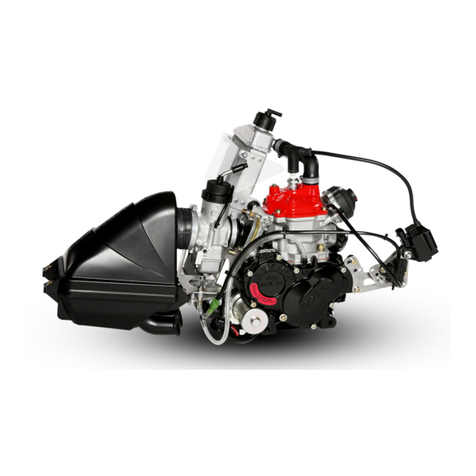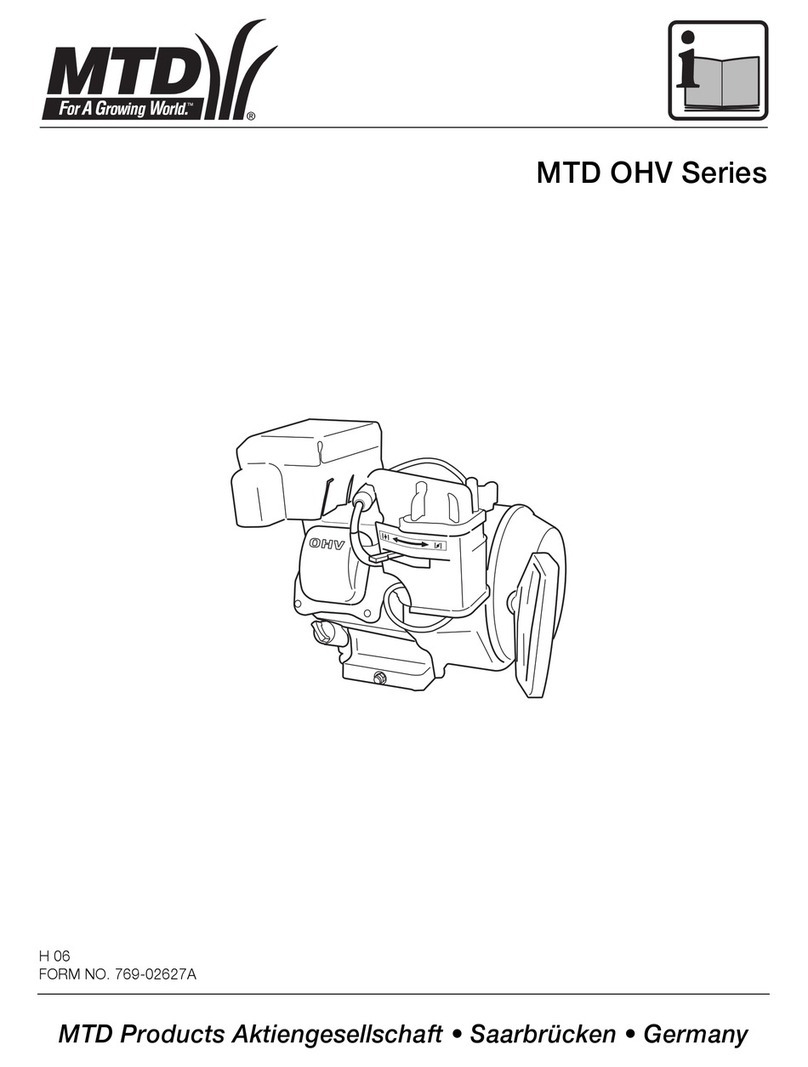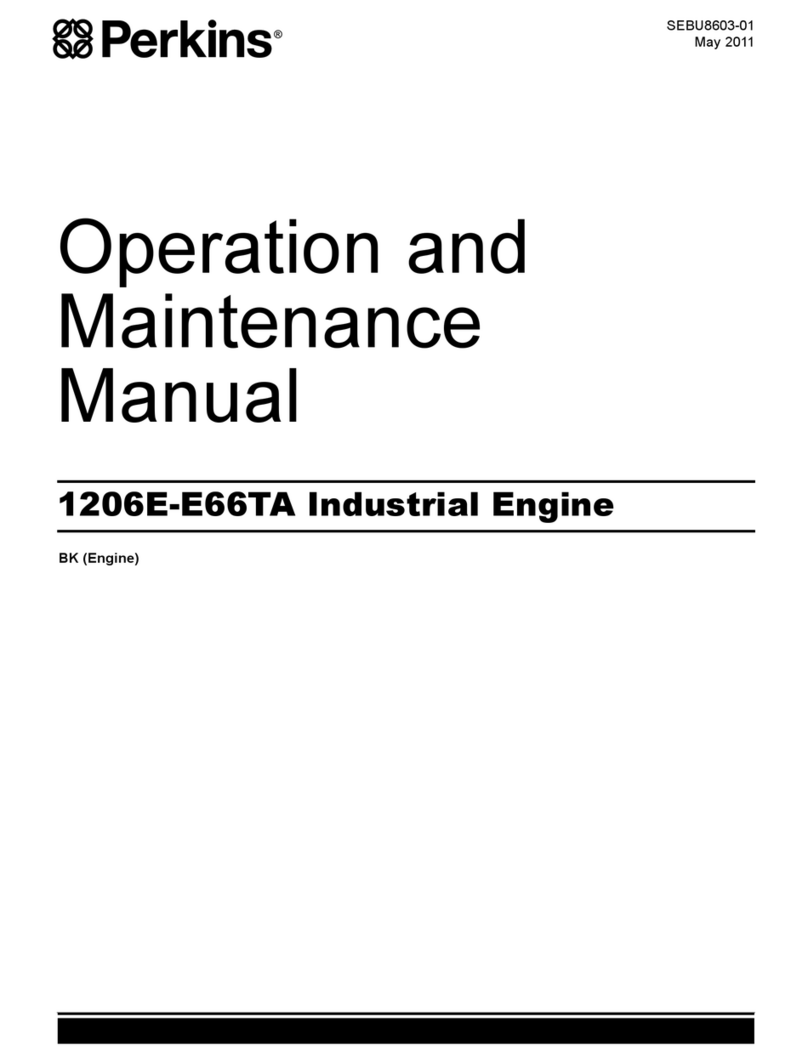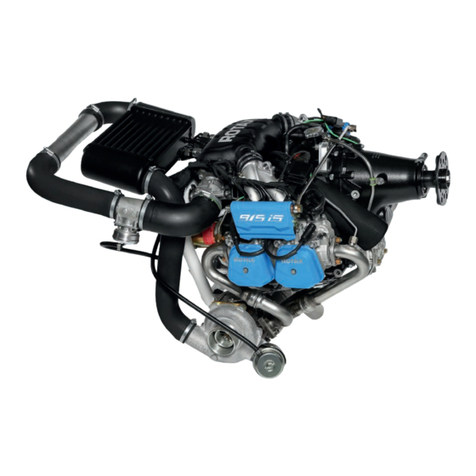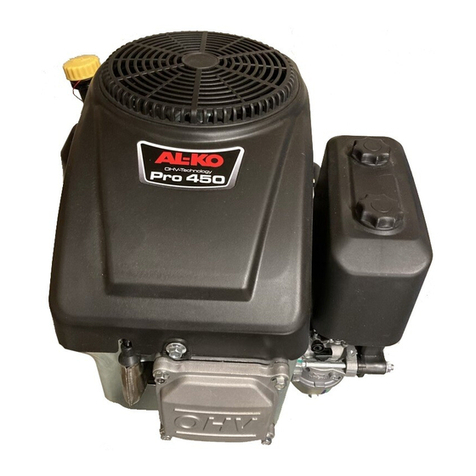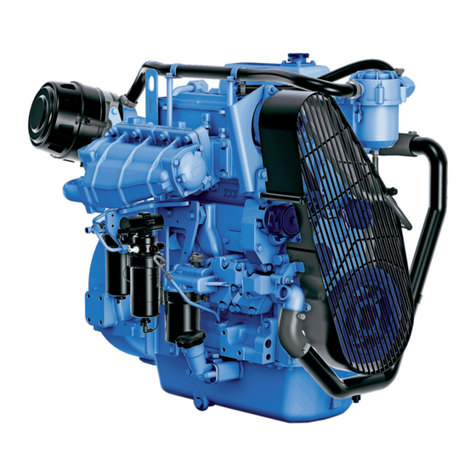
9
ASSEMBLY AND COMMISSIONING RECOMMENDATIONS
LSHRM - FLSHRM - PLSHRM - Permanent Magnet Assisted Reluctance motors
5411 en - 2019.04 / b
3 - ASSEMBLY AND COMMISSIONING
RECOMMENDATIONS
In all cases, compatibility of the motor and its
environment must be guaranteed before its
installation and also throughout its life.
Electric motors are industrial products.
They must therefore be installed by
qualied, experienced and authorised personnel.
The safety of people, animals and property must be
ensured when tting the motors into machines
(please refer to current standards).
3.1 - Checking the insulation
This check is essential if the motor has been stored for
longer than 6 months or if it has been kept in a damp
atmosphere.
This measurement must be carried out using a meg-
ohmmeter at 500 volts DC (do not use a magnetoelectric
system). It is better to carry out an initial test at 30 or 50
volts and if the insulation is greater than 1 megohm,
carry out a second test at 500 volts DC for 60 seconds,
between the winding and ground (on U then V then W).
The insulation value must be at least 10 megohms in
cold state.
If this value cannot be achieved, or routinely if the motor
might have been splashed with water or salt spray, or
kept for a long period in a very humid place, or if it is
covered with condensation, the motor should be dried
using the optional space heaters if the motor has them
(see section 3.4.3).
Do not apply the megohmmeter to the terminals
of the temperature sensors as this can damage
them.
For any insulation or high voltage test, it is
advisable to connect the temperature sensors and/
or accessories to ground.
Caution: If the high voltage test, carried out
at the factory before dispatch, needs to be
repeated, this should be performed at half
the standard voltage, i.e.:
1/2 (2 U + 1000 V). Check that the capacitive
effect resulting from the high voltage test
is eliminated before connecting the
terminals to ground.
3.2 - Location - ventilation
The motor must be installed in a ventilated place, with
clearance for the air inlet and outlet.
Obstruction (clogging) – even accidental – of the venti-
lation circuit has an adverse effect on motor operation.
With drip-proof motors, do not obstruct the air inlet with
a coupling guard, provide a perforated plate.
It is also necessary to check that the hot air is not being
recycled. If it is, pipes must be provided for the intake of
cold air and expulsion of hot air, in order to prevent an
abnormal increase in motor temperature.
In this case, if the air is not circulated by an auxiliary fan,
the dimensions of the pipes must be such that the pres-
sure losses are negligible compared to those of the
motor.
3.2.1 - Enclosed motors
Our motors are cooled in accordance with method
IC 411 (standard IEC 60034-6) i.e. “machine cooled by
its surface, using the ambient uid (air) owing along the
machine”.
The fan at the non-drive end cools the motor. Air is
sucked in through the grille of a fan cover (which pro-
vides protection against the risk of direct contact with the
fan in accordance with standard IEC 60034-5) and
blown along the housing ns to ensure the thermal equi-
librium of the motor in any direction of rotation.
Before starting the motor, it is advisable to
check the insulation between the phases and
earth, and between phases.
